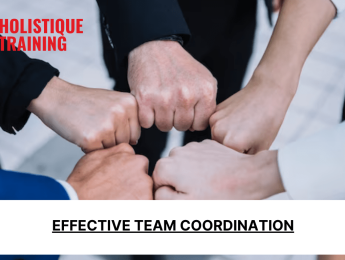- Table of Contents
- Introduction
- What is the Concept of Management by Walking Around?
- How Does Management by Walking Around (MBWA) Work?
- Frequent Walkarounds:
- Open Conversations:
- Observation:
- Accessibility:
- What are the 3 Components of Management by Walking Around?
- Presence:
- Engagement:
- Observation:
- Table: Metrics to measure the effectiveness of MBWA
- What are the Benefits of Management by Walking Around?
- Improved Communication
- Increased Employee Engagement
- Early Problem Detection
- Enhanced Trust and Relationships
- Better Decision-Making
- Recognition and Encouragement
- Enhanced Understanding of Work Processes
- Fostering Innovation
- Challenges of Management by Walking Around
- Time Constraints
- Employee Perception
- Consistency
- Effective Communication
- Handling Feedback
- Avoiding Disruption
- Maintaining Objectivity
- Scalability
- Adapting to Remote Work
- Balancing Informality with Authority
- Tips for Implementing Management by Walking Around Effectively
- Be Consistent:
- Be Approachable:
- Ask Open-Ended Questions:
- Listen Actively:
- Provide Immediate Feedback:
- Document Observations
- Follow Up:
- Be Genuine:
- Respect Boundaries:
- Adapt to Your Team’s Needs:
- Conclusion
Introduction
Management by Walking Around (MBWA) is a timeless leadership approach that promotes direct interaction between managers and employees. This hands-on method fosters communication, strengthens relationships, and enhances organisational understanding. Managers can gain invaluable insights and address issues proactively by stepping away from their desks and engaging with their teams. This post delves into the essence of MBWA, its components, benefits, challenges, and tips for effective implementation.
What is the Concept of Management by Walking Around?
Management by Walking Around, often abbreviated as MBWA, is a management style that emphasises direct, face-to-face interaction between managers and employees. This concept gained popularity in the 1980s through Tom Peters and Robert H. Waterman in their book " In Search of Excellence ." They highlighted MBWA as a key practice among successful companies. The idea is simple: managers should spend some time walking around the workplace, engaging in informal conversations with employees, observing operations, and being accessible.
The roots of MBWA can be traced back to the practices of Hewlett-Packard (HP) during the 1970s. Bill Hewlett and Dave Packard, co-founders of HP, were known for their open-door policy and regular walkarounds, fostering a culture of approachability and transparency. Their leadership style became a cornerstone of HP's success and laid the foundation for MBWA as a recognized management practice.
How Does Management by Walking Around (MBWA) Work?
MBWA operates through a series of informal, unstructured interactions that help managers stay connected with their teams and gain firsthand insights into daily operations. Here’s a deeper look into how MBWA works:
Frequent Walkarounds:
Managers who practise MBWA make it a habit to walk through different workplace areas regularly. This practice is not limited to any specific time or schedule but is rather a continuous and spontaneous activity. The goal is to break away from the confines of their offices and immerse themselves in the everyday environment of their employees. These walkarounds allow managers to observe the workflow, understand the physical layout of the workplace, and witness the actual conditions under which employees perform their tasks. By frequently walking around, managers can stay updated on ongoing projects, spot potential issues before they escalate, and reinforce their presence as a supportive figure within the organisation.
Open Conversations:
During these walkarounds, managers engage in casual, informal conversations with employees. These interactions are not pre-planned or scripted, allowing for genuine and spontaneous dialogue. Managers might ask employees how their day is going, inquire about challenges, or seek feedback on recent changes or initiatives. The objective is to create an open, non-threatening environment where employees feel comfortable sharing their thoughts and concerns. Open conversations help managers better understand employee morale, uncover hidden issues, and gather valuable feedback that might not surface in formal meetings. These dialogues also give employees direct access to management, making them feel valued and heard.
Observation:
Observation is a critical component of MBWA, allowing managers to gain a real-time understanding of the work environment and processes. By observing firsthand, managers can identify bottlenecks, inefficiencies, and areas for improvement that may not be evident from reports or second-hand accounts. For example, a manager might notice that a particular piece of equipment frequently malfunctions or that certain workflows are causing unnecessary delays. Such observations enable managers to address problems promptly and implement solutions that enhance productivity and efficiency. Additionally, observation helps managers recognize and appreciate the efforts of their employees, fostering a culture of acknowledgement and motivation.
Accessibility:
One of the key aspects of MBWA is making managers more approachable and accessible to their employees. Traditional hierarchical structures can create a sense of distance and formality between managers and their teams. By practising MBWA, managers break down these barriers and demonstrate their willingness to engage with employees personally. Accessibility means listening to employee concerns, answering questions, and providing guidance when needed. It also involves creating an atmosphere where employees feel comfortable initiating conversations with management. This increased accessibility helps build trust, encourages open communication, and strengthens the overall relationship between managers and employees.
By integrating these elements into their daily routines, managers can effectively practise MBWA and reap its numerous benefits. Frequent walkarounds, open conversations, keen observation, and enhanced accessibility together create a dynamic and responsive management approach that fosters a positive and productive workplace culture.
What are the 3 Components of Management by Walking Around?
Management by Walking Around (MBWA) is grounded in three essential components that contribute to its effectiveness: presence, engagement, and observation. Each of these components plays a vital role in ensuring that MBWA not only fosters a positive work environment but also enhances communication, trust, and operational efficiency.
Presence:
The physical presence of managers in the workplace is the cornerstone of MBWA. This goes beyond merely being visible; it involves managers actively participating in the organisation's daily activities. By regularly walking around the workplace, managers demonstrate their commitment to understanding and supporting their teams. Presence is about showing up consistently and being available to employees. It sends a powerful message that managers are approachable, involved, and genuinely interested in the well-being and success of their employees.
When managers are present, they can witness the day-to-day operations, understand employees' challenges, and gain a realistic perspective of the workplace dynamics. This physical presence also helps to humanise the management team, breaking down barriers and reducing the perceived distance between employees and their leaders. It fosters a sense of solidarity and shows that managers are part of the team, not just overseers.
Engagement:
Engagement is the active involvement of managers in conversations with employees during their walkarounds. This component is critical for building relationships, understanding employee perspectives, and fostering a culture of open communication. Effective engagement involves asking open-ended questions, listening actively, and responding thoughtfully. Managers should create a comfortable and informal atmosphere where employees feel safe expressing their thoughts, ideas, and concerns.
Engaging with employees helps managers gather valuable insights that might not be captured through formal channels. These conversations can reveal underlying issues, innovative ideas, and potential improvements to enhance organisational performance. Furthermore, engagement demonstrates that managers value employee input and are willing to act on their feedback. This boosts morale, increases job satisfaction, and encourages a collaborative environment.
Observation:
Observation is a crucial aspect of MBWA, allowing managers to gain firsthand knowledge of the workplace environment, processes, and employee interactions. By observing operations directly, managers can identify inefficiencies, recognize exemplary performance, and understand the context in which employees work. This real-time understanding is invaluable for making informed decisions, providing timely support, and implementing effective solutions.
Through observation, managers can spot potential issues before they escalate, such as workflow bottlenecks, equipment malfunctions, or safety hazards. It also allows recognising and celebrating successes, reinforcing positive behaviours and achievements. Observation helps managers stay connected to the realities of the workplace, ensuring that their decisions are grounded in practical, on-the-ground knowledge rather than relying solely on reports or second-hand information.
Additionally, observation allows managers to lead by example, demonstrating the standards and behaviours they expect from their team. Managers can inspire employees to take pride in their work and strive for continuous improvement by modelling a hands-on approach and showing a keen interest in daily operations.
These three components—presence, engagement, and observation—form the foundation of an effective MBWA strategy. By consistently practising these elements, managers can create a more transparent, communicative, and supportive work environment that drives both employee satisfaction and organisational success.
Metric | Description |
Employee Engagement Scores | Survey results on employee engagement |
Feedback Frequency | Number of employee feedback instances |
Issue Resolution Time | Average time to resolve identified issues |
Communication Quality | Survey results on communication clarity |
Employee Turnover Rate | Rate of employees leaving the company |
Table: Metrics to measure the effectiveness of MBWA
What are the Benefits of Management by Walking Around?
MBWA offers numerous benefits that can significantly enhance organisational culture and performance:
Improved Communication
MBWA fosters open lines of communication between managers and employees. Regular, informal interactions encourage employees to share their thoughts, ideas, and concerns more freely. This open communication channel ensures that vital information flows both ways—managers stay informed about the challenges and successes within their teams, while employees feel heard and valued. By reducing communication barriers, MBWA helps create a transparent and collaborative workplace culture where issues can be addressed promptly and effectively.
Increased Employee Engagement
When managers take the time to interact with their employees, it sends a powerful message that they care about their team's well-being and success. This direct interaction boosts employee morale and engagement, as workers feel appreciated and recognized for their contributions. Engaged employees are more likely to be productive, innovative, and committed to their organisation’s goals. They also tend to exhibit higher levels of job satisfaction, which can lead to lower turnover rates and a more stable workforce.
Early Problem Detection
One of the key advantages of MBWA is the ability to identify and address issues before they escalate. By being present and observant, managers can spot potential problems, whether related to processes, equipment, or interpersonal conflicts. This proactive approach allows for timely interventions, reducing the risk of minor issues developing into major disruptions. Early problem detection not only improves operational efficiency but also minimises employee stress and frustration.
Enhanced Trust and Relationships
Trust is a cornerstone of a healthy workplace culture, and MBWA plays a significant role in building and maintaining it. Managers can develop stronger, more personal relationships with their employees through regular, face-to-face interactions. These interactions humanise managers, making them more approachable and relatable. Employees who trust their managers are likelier to communicate openly, seek advice, and collaborate effectively. Stronger relationships built on trust also enhance team cohesion and morale.
Better Decision-Making
Direct observations and firsthand knowledge of day-to-day operations provide managers with accurate and current information. This ground-level insight is invaluable for making practical and effective decisions. Unlike decisions based solely on reports or secondhand information, those informed by MBWA reflect the real conditions and challenges of the workplace. Better decision-making leads to improved outcomes, more efficient processes, and a stronger alignment between management strategies and operational realities.
Recognition and Encouragement
MBWA allows managers to recognize and appreciate employees' efforts and achievements in real time. Immediate recognition can significantly boost motivation and reinforce positive behaviours. When employees feel their hard work is noticed and valued, it fosters a sense of pride and loyalty. Regular encouragement from managers can also inspire employees to maintain high performance and continue striving for excellence.
Enhanced Understanding of Work Processes
Through MBWA, managers gain a deeper understanding of work processes and the challenges employees face daily. This hands-on knowledge enables managers to identify inefficiencies, streamline workflows, and implement practical improvements. Understanding the intricacies of work processes helps managers provide better support and resources to their teams, leading to increased productivity and smoother operations.
Fostering Innovation
Informal interactions during MBWA often lead to spontaneous idea generation and problem-solving discussions. Employees may feel more comfortable sharing innovative ideas and suggestions casually than in formal meetings. By creating an environment that encourages creativity and open dialogue, MBWA can help foster a culture of continuous innovation . This continuous flow of ideas can lead to new and improved working methods, giving the organisation a competitive edge.
By leveraging these benefits, organisations can create a more dynamic, responsive, and engaged workforce. Management by Walking Around is not just a management technique but a cultural shift towards openness, trust, and proactive problem-solving, ultimately driving the organisation toward greater success and sustainability.
Challenges of Management by Walking Around
While Management by Walking Around (MBWA) offers numerous benefits, it also comes with its own set of challenges. Effective implementation of MBWA requires managers to navigate potential pitfalls and address various concerns to ensure that this approach yields the desired outcomes. Here are some of the challenges associated with MBWA:
Time Constraints
One of the primary challenges of MBWA is the time commitment required from managers. Regularly walking around and engaging with employees can be time-consuming, especially for managers with already packed schedules. Balancing MBWA with other managerial responsibilities, such as meetings, strategic planning, and administrative tasks, can be difficult. Managers must prioritise their time effectively to ensure they can practise MBWA without neglecting their other duties.
Employee Perception
Employees may initially perceive MBWA as a form of micromanagement or surveillance, leading to feelings of discomfort or mistrust. They might fear that managers scrutinise their every move or that causal interactions are actually evaluations in disguise. Overcoming this perception requires managers to build trust and demonstrate that their presence is supportive rather than intrusive. It’s essential for managers to communicate the purpose of MBWA clearly and consistently to reassure employees that the goal is to foster communication and collaboration, not to monitor or control.
Consistency
Consistency is crucial for MBWA to be effective, yet it can be challenging to maintain. Managers must make a sustained effort to walk around and engage with employees regularly. Inconsistent application of MBWA can lead to confusion and a lack of trust among employees. If managers only practise MBWA sporadically, employees might not see it as a genuine effort to connect and understand their work environment. Developing a routine and making MBWA a habitual part of the managerial approach is essential for its success.
Effective Communication
While MBWA aims to enhance communication, it can also highlight communication challenges. Not all managers possess the necessary interpersonal skills to engage effectively with employees. Managers must be good listeners, ask the right questions, and respond empathetically to concerns. Poor communication skills can hinder the effectiveness of MBWA, leading to misunderstandings or missed opportunities for gathering valuable feedback. Training and development in communication skills can help managers overcome this challenge.
Handling Feedback
MBWA can result in managers receiving a significant amount of positive and negative feedback. Handling this feedback effectively is a challenge in itself. Managers must be prepared to listen to constructive criticism, address concerns, and implement necessary changes. This requires a proactive approach to problem-solving and a willingness to act on employee suggestions. Ignoring or mishandling feedback can erode trust and undermine the benefits of MBWA.
Avoiding Disruption
Managers must be mindful not to disrupt the workflow while practising MBWA. Frequent interruptions or prolonged conversations can hinder productivity and cause frustration among employees who are focused on their tasks. Managers need to find the right balance between engaging with employees and allowing them to work uninterrupted. This can be achieved by choosing appropriate times for walkarounds and keeping interactions concise and relevant.
Maintaining Objectivity
MBWA involves informal, personal interactions, sometimes leading to favouritism or bias. Managers may develop closer relationships with certain employees, leading to perceptions of favouritism. It’s crucial for managers to remain objective and treat all employees fairly. They must ensure that their interactions are balanced and that they are equally accessible to all team members. Maintaining professionalism while building rapport is essential to avoid any negative impact on team dynamics.
Scalability
In larger organisations or teams, it can be challenging for managers to connect with every employee regularly. The effectiveness of MBWA can diminish if managers cannot interact with a significant portion of their team. To address this challenge, managers may need to delegate some aspects of MBWA to team leaders or supervisors, ensuring the approach is scaled appropriately while maintaining its core principles.
Adapting to Remote Work
With the increasing prevalence of remote work, the traditional practice of MBWA faces new challenges. Managers need to adapt MBWA to virtual environments and find ways to connect with remote employees effectively. This might involve regular video calls, virtual check-ins, and leveraging digital communication tools. Adapting MBWA to remote work requires creativity and a commitment to maintaining strong connections despite physical distance.
Balancing Informality with Authority
MBWA emphasises informal interactions, but managers must maintain authority and professional boundaries. Striking the right balance between being approachable and maintaining managerial authority can be challenging. Managers must ensure that while fostering a friendly and open environment, they also uphold their role's necessary standards and expectations. This balance is crucial for maintaining respect and discipline within the team.
Managers can effectively implement MBWA and maximise its benefits by acknowledging and addressing these challenges. Overcoming these obstacles requires a thoughtful approach, continuous effort, and a commitment to fostering a supportive and communicative work environment.
Tips for Implementing Management by Walking Around Effectively
Implementing Management by Walking Around (MBWA) effectively requires thoughtful planning, consistent effort, and a genuine commitment to engaging with employees. Here are some detailed tips to help managers make the most of this approach:
Be Consistent:
Consistency is key to MBWA's success. Regularly walking around and interacting with employees builds trust and shows managers are committed to staying connected with their teams. Consistent presence means setting aside dedicated time for walkarounds and making them a routine part of the managerial approach. Daily, weekly, or intervals that suit the organisational workflow. The goal is to establish a predictable pattern so employees come to expect and appreciate these interactions.
Be Approachable:
Managers need to cultivate an approachable demeanour during their walkarounds. This involves maintaining friendly and open body language, smiling, and engaging in casual conversations. Being approachable means creating an environment where employees feel comfortable sharing their thoughts and concerns without fear of judgment or repercussions. Managers should aim to listen more than they speak, showing genuine interest in what employees have to say. Encouraging open dialogue can help break down barriers and foster a culture of trust and collaboration.
Ask Open-Ended Questions:
Asking open-ended questions is a powerful way to encourage meaningful conversations. Instead of yes-or-no questions, managers should ask questions that prompt detailed responses and deeper insights. Examples include, “Can you tell me more about how this process works?” or “What challenges have you faced this week?” These questions demonstrate that managers are genuinely interested in understanding the employees' perspectives and experiences. Open-ended questions can uncover valuable information about the workplace, highlight potential issues, and generate innovative ideas for improvement.
Listen Actively:
Active listening is a critical skill for MBWA. It involves giving full attention to the speaker, acknowledging their points, and responding thoughtfully. Managers should avoid interrupting and instead useverbal and non-verbal cues to show they are engaged in the conversation. Paraphrasing and summarising the employee's words can confirm understanding and validate their concerns. Active listening builds trust, as employees feel heard and respected. It also ensures that managers gather accurate and comprehensive information to inform their decisions.
Provide Immediate Feedback:
Providing immediate feedback during MBWA can reinforce positive behaviours and address issues promptly. When managers observe good performance or innovative ideas, they should offer praise and recognition on the spot. Conversely, if they notice areas for improvement, they should provide constructive feedback respectfully and supportively. Immediate feedback helps employees understand the impact of their actions in real time and encourages continuous development. It also shows managers are attentive and invested in their team’s success.
Document Observations
While the interactions during MBWA are informal, it’s important for managers to document their observations and insights. Keeping a record of key points discussed, issues identified, and feedback given can help track progress and follow up on important matters. Documentation ensures that valuable information gathered during walkarounds is not lost and can be referenced for future decision-making. It also helps managers to identify patterns and trends that may require more strategic interventions.
Follow Up:
Following up on conversations and commitments made during MBWA is crucial for building trust and demonstrating accountability. If an employee raises a concern or suggests an idea, managers should ensure they take appropriate action and communicate the outcomes back to the employee. This follow-up shows managers value employees' input and are committed to making positive changes based on their feedback. Consistent follow-up also reinforces the credibility of MBWA as a genuine effort to improve the workplace rather than just a managerial formality.
Be Genuine:
Authenticity is essential for the success of MBWA. Managers should approach walkarounds with genuine curiosity and a sincere desire to connect with their employees. Employees can quickly sense insincerity, and if they perceive MBWA as a superficial exercise, it can undermine trust and engagement. Being genuine means being honest, transparent, and empathetic during interactions. Managers should share relevant information about the organisation, express appreciation for employees’ efforts, and show a real commitment to addressing their concerns and ideas.
Respect Boundaries:
According to a recent study by LendingTree, maintaining professional boundaries is advantageous for both employees and the organisations they work for. So, while MBWA involves informal interactions, it’s important for managers to respect employees' boundaries and workspace. Managers should avoid interrupting employees during critical tasks or busy periods. Asking if it’s a good time to talk and being sensitive to the employee's workload can help maintain a respectful and supportive environment. Respecting boundaries ensures that MBWA does not become disruptive and that employees view it as a positive and productive initiative.
Adapt to Your Team’s Needs:
MBWA should be tailored to fit each team's unique needs and dynamics. Managers should consider factors such as team size, work environment, and individual preferences when planning their walkarounds. For example, a team working in a high-stress environment may benefit from more frequent but shorter interactions, while a creative team might appreciate longer, in-depth conversations. Adapting MBWA to the team's specific context ensures that it is effective and well-received by employees.
By following these tips, managers can implement MBWA to maximise its benefits and minimise potential challenges. The key is to approach MBWA with consistency, genuine interest, and a focus on fostering open communication and strong relationships within the team.
Conclusion
Management by Walking Around is a powerful leadership approach that fosters direct interaction, communication, and trust between managers and employees. By being present, engaging in open conversations, and observing operations, managers can gain valuable insights, identify issues early, and enhance organisational performance. Despite its challenges, the benefits of MBWA—such as improved communication, increased employee engagement, and better decision-making—make it a valuable practice for any organisation. By following the tips for effective implementation, managers can leverage MBWA to create a more transparent, collaborative, and motivated workplace.
To further enhance your leadership skills and effectively implement MBWA, consider enrolling in our course "Leadership Styles for Trainee Supervisors." This course provides comprehensive insights into various leadership styles, including practical strategies for developing your effective management approach. Click the link below for more information!























